Most Popular Vegetable Garden Ideas For Beginners

Vegetables are one of the most important sources of food. Vegetable garden ideas is a place where you can grow all sorts of healthy and tasty vegetables. It’s like having a mini farm right in your backyard.
Today, we are going to discuss the 10 most popular and easy-to-grow vegetables.
They are-
- Tomato
- Carrot
- Cucumber
- Potato
- Radish
- Pea
- Lettuce
- Runner Bean
- Beetroot
- Onion
Vegetable Garden Ideas and Some Tips
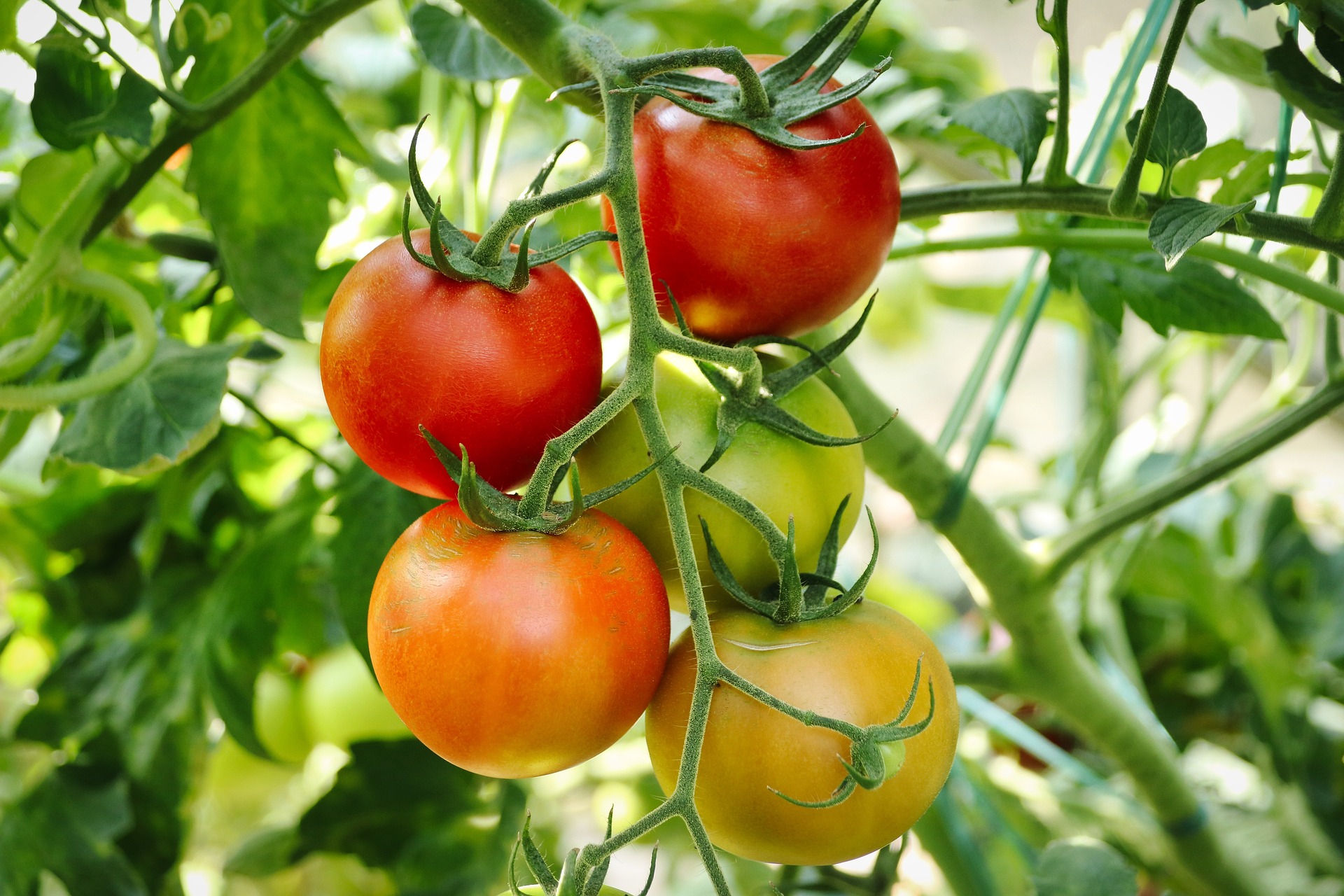
Tomato
Tomatoes are highly nutritious and offer several health benefits. They are a source of vitamins C, B, K, and more. Tomatoes contain antioxidants, fiber, potassium, and are low in calories.
There are two types of tomatoes: Bush (Determinate) and Cordon (Indeterminate). As a beginner, the bush type is better for you because you don’t need to stake them or pinch out growing tips. You can choose varieties like Garten Erle or Tumbling Tom Red, which are great for hanging baskets.
Now let’s learn how to grow tomatoes:
- Choose the right variety: Select a variety suited to your climate and growing conditions.
- Plant in full sun: Ensure the tomato plant gets at least 6-8 hours of direct sunlight each day.
- Use quality soil: Soil with a pH between 6.0 and 6.8 is suitable for tomatoes. Plant in well-draining soil enriched with organic matter.
- Space properly: Allow 18-24 inches of space between plants.
- Water consistently: Keep the soil consistently moist but not waterlogged.
- Support plants: Use stakes, cages, or trellises to support the plants and keep the fruit off the ground.
- Fertilize regularly: Feed with a balanced fertilizer or one high in phosphorus to support fruit development.
- Pruning: For indeterminate varieties, prune the lower leaves and suckers to improve air circulation and focus the plant’s energy on fruit production.
- Pest and disease management: Regularly inspect plants for aphids and blight. Organic treatment is best, but you can also choose resistant varieties if necessary.
- Harvesting: Pick tomatoes when they are fully colored but still firm. They will ripen further off the vine if needed.
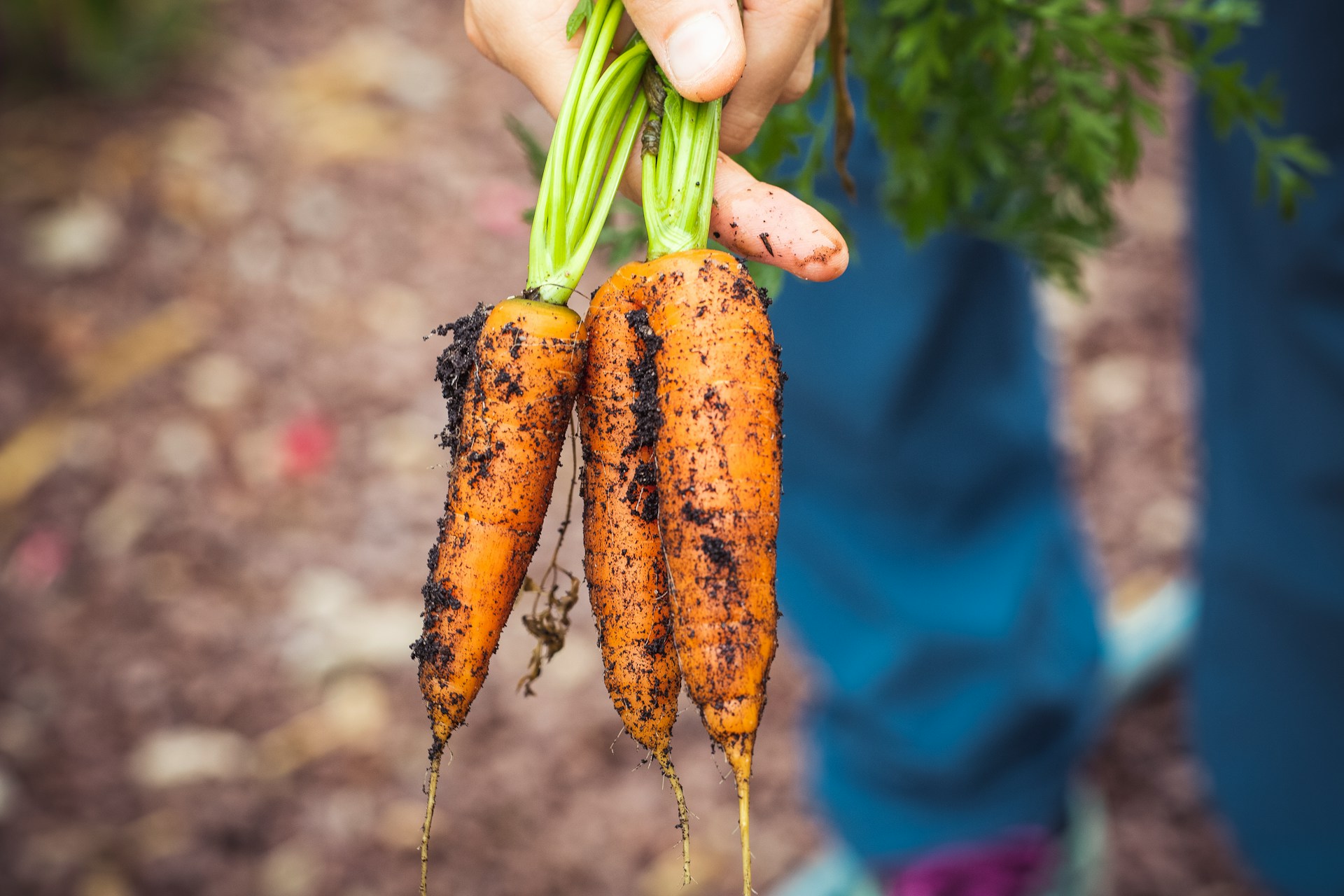
Carrot
Carrots are a root vegetable and a very popular, healthy, and tasty option. Carrots offer a range of benefits and are high in vitamins and minerals. They are good for eye health, digestive and heart health, and skin health.
Perfect time for planting: Mid to late summer is the perfect time for sowing seeds. High summer temperatures reduce growth and decrease quality.
How to plant carrots:
- Prepare the soil: First, prepare your soil by tilling to a depth of 10 inches. Carrots need loose and sandy soil to grow straight and long. You can amend the soil with compost for better fertility.
- Sow seeds: Carrot seeds should be sown thinly because they are very tiny. Plant them about ¼ inch deep and 1-2 inches apart. It would be easier if you mix the seeds with sand.
- Watering: Keep the soil consistently moist but not waterlogged. In dry periods, carrots need regular watering.
- Thinning: Thinning is very important. Once the seedlings are a few inches tall, thin them out to about 2-4 inches apart.
- Weeding: Remove weeds regularly as they compete with carrots for nutrients and water.
- Harvesting: Harvest them 70-80 days after sowing. You can test by pulling one up. Harvest them before they become too large and woody.
By following these steps, you can grow carrots easily.
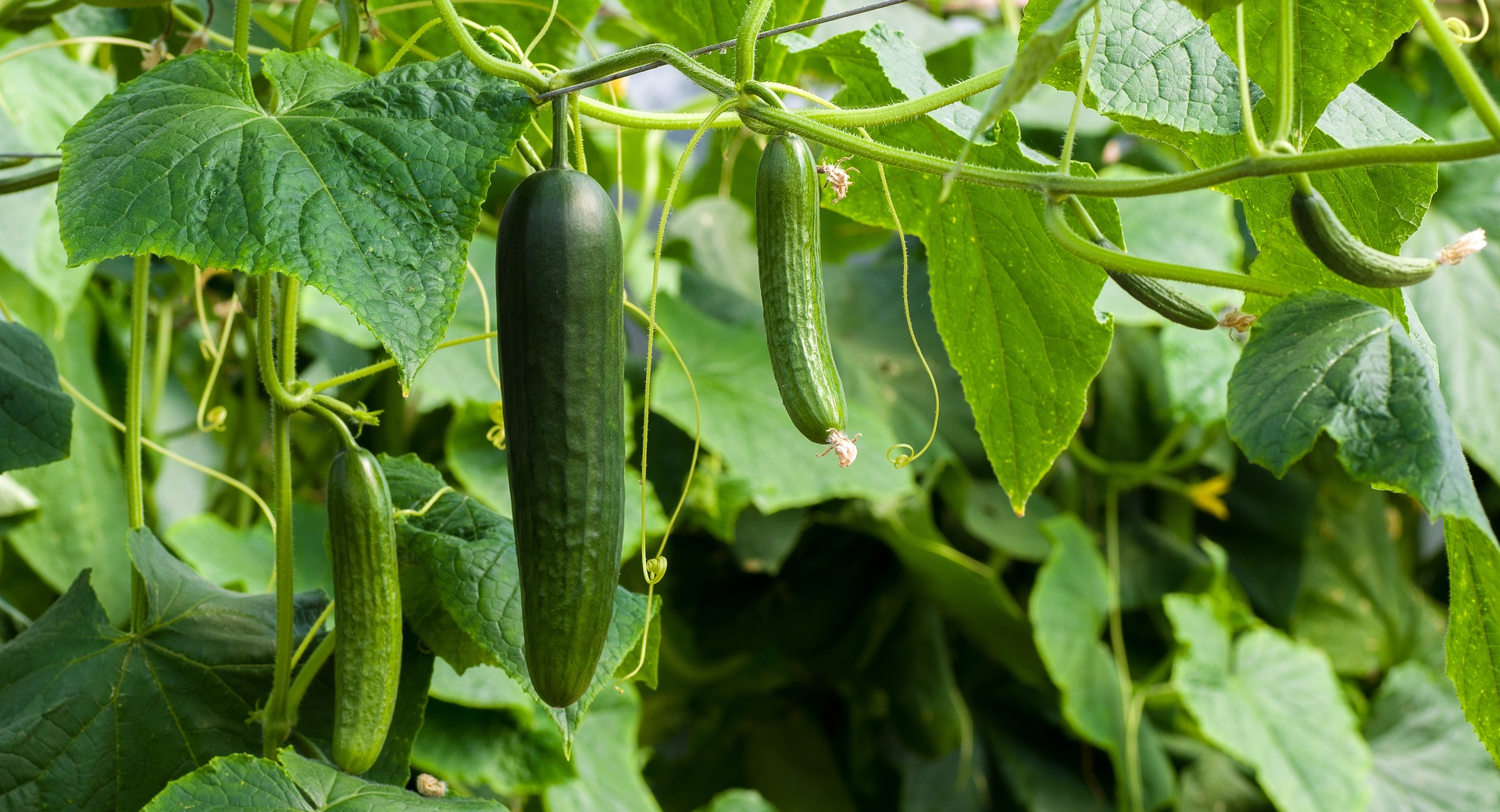
Cucumber
Cucumbers are a nutritious, versatile, and beneficial vegetable.
You can grow cucumbers by following these steps:
- Choose the perfect time and soil: Plant cucumbers after the last frost date. When the soil temperature is consistently above 60°F (15°C), it is perfect for cucumbers.
- Soil preparation: Amend the soil with compost or well-rotted manure to ensure it is rich and well-draining. Cucumbers need at least 6-8 hours of sunlight daily, so choose a sunny plot.
- Planting: Direct sowing is better than transplanting. Sow seeds about 1 inch deep, 2-3 seeds per hole, spaced 18-24 inches apart. You can transplant seedlings outdoors when they have 2-3 true leaves, and the weather is warm.
- Watering: Keep the soil moist but not waterlogged. During dry spells, cucumbers need regular watering.
- Mulch and weed: Applying mulch retain moisture and suppresses weeds.
- Fertilizing: Feed cucumbers with a balanced fertilizer or compost, especially during their growing season. Avoid excessive nitrogen.
- Harvesting: Harvest cucumbers when they are firm and green. For more production, pick them regularly.
By following these steps, you can grow cucumbers easily.
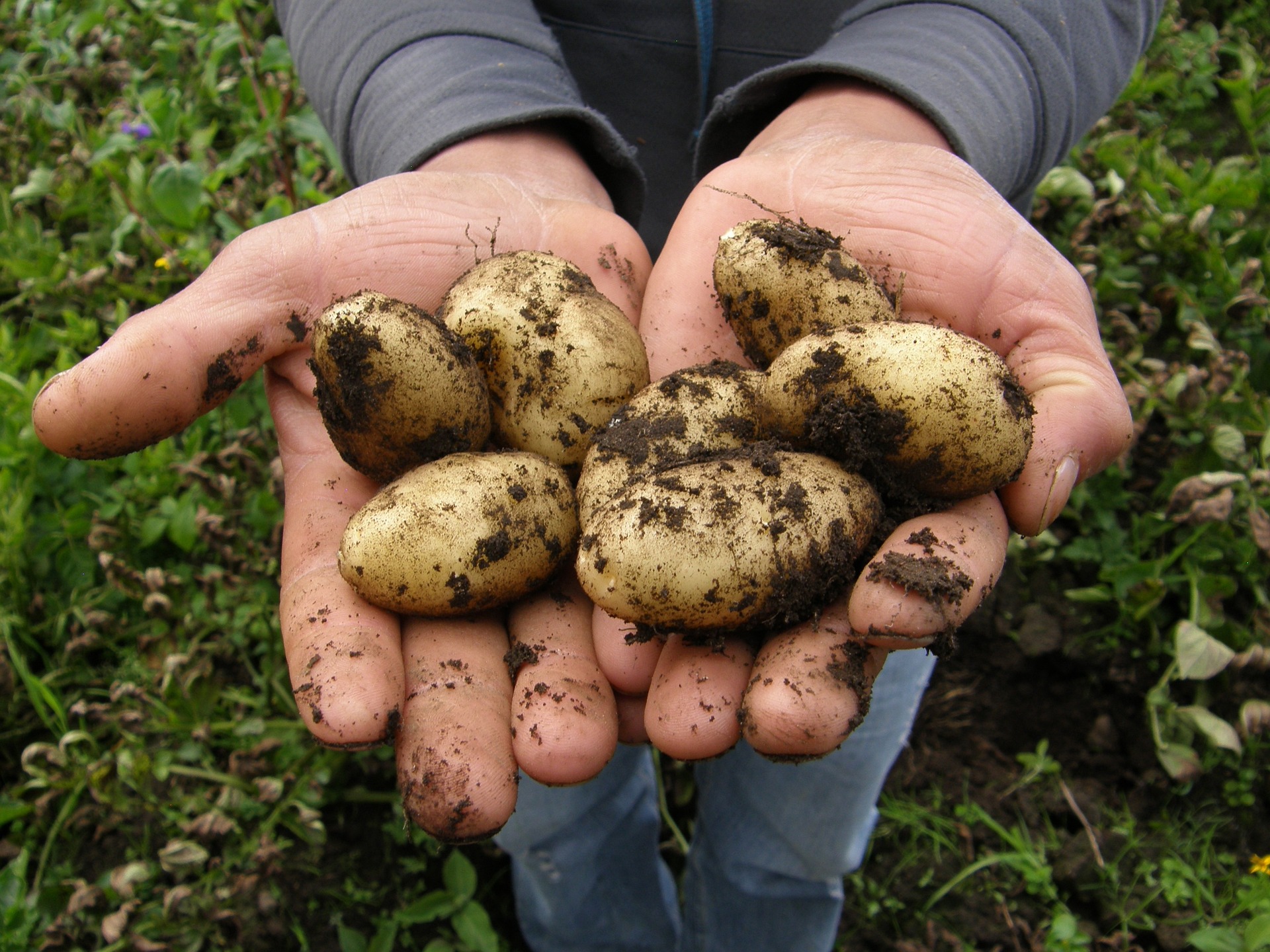
Potato
Potatoes are versatile and nutritious vegetable rich in carbohydrates, vitamins C and B6, potassium, and dietary fiber.
When and how to plant potatoes:
- Timing: Cool seasons are best for growing potatoes. Early spring, about 2-4 weeks before the last expected frost, is the perfect time for planting potatoes.
- Choose seed potatoes: Select disease-free and certified seed potatoes. Grocery store potatoes may carry diseases, so don’t select them as seeds.
- Prepare the soil: Use loose soil with a pH between 5.5 – 7.0. Enrich the soil with compost or well-rotted manure.
- Planting: Plant seed potato pieces about 4-6 inches deep and 12 inches apart. Rows should be spaced about 2-3 feet apart.
- Watering: Keep the soil moist, but ensure it’s not waterlogged. Avoid watering the foliage to reduce the risk of disease.
- Hilling: Hilling is important to cover developing tubers and protect them from sunlight, which can cause them to turn green and become toxic. Mound soil around the base of the plants.
- Fertilizing: Apply balanced fertilizer according to the manufacturer’s instructions, usually when plants are about 6 inches (15 cm) tall.
- Harvesting: Potatoes are ready to harvest 70-100 days from planting, depending on the variety. Harvest when the plants begin to die back. Gently dig up the tubers with a spade or fork, being careful not to damage the potatoes.
By following these steps, you can successfully grow potatoes.
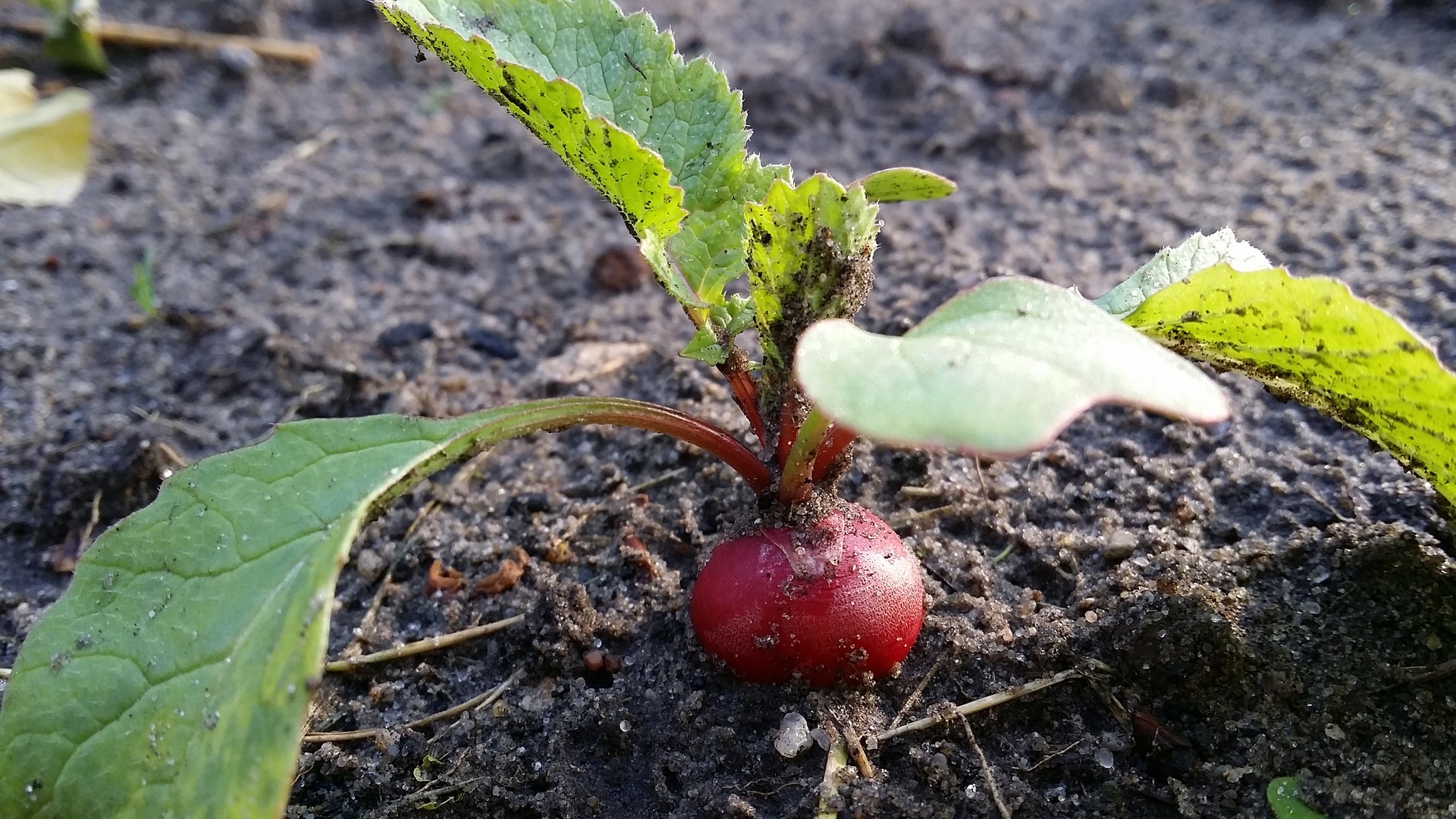
Radish
Radishes are a root vegetable that offers several health benefits, such as being nutrient-rich, having antioxidant properties, and supporting digestive health, hydration, weight management, and detoxification.
How to plant radishes:
- Timing: Radishes are cool-season vegetables, so you can plant seeds 4-6 weeks before the last expected frost.
- Choose a location: Ensure the soil is well-drained and loose. Radishes thrive in full sun but can tolerate partial shade.
- Prepare the soil: First, loosen the soil to a depth of at least 6-8 inches. Remove any rocks and debris. Then mix in compost to improve soil fertility.
- Planting seeds: Sow radish seeds directly into the soil about ½ inch deep. Space the seeds 1 inch apart in rows that are 12-18 inches apart.
- Watering: Keep the soil moist but not waterlogged. Radish seeds need moisture to germinate, which usually takes about 5-10 days.
- Thinning: Overcrowding doesn’t allow radishes to grow properly, so thin them when they are a few inches tall, leaving 2 inches between plants.
- Maintenance: Continue to water as needed and keep the area weed-free.
- Harvesting: Harvest radishes when they are firm and about 1 inch in diameter. Radishes typically mature in about 3-4 weeks.
Follow these steps, and you’ll be able to grow healthy, crisp radishes in your garden.
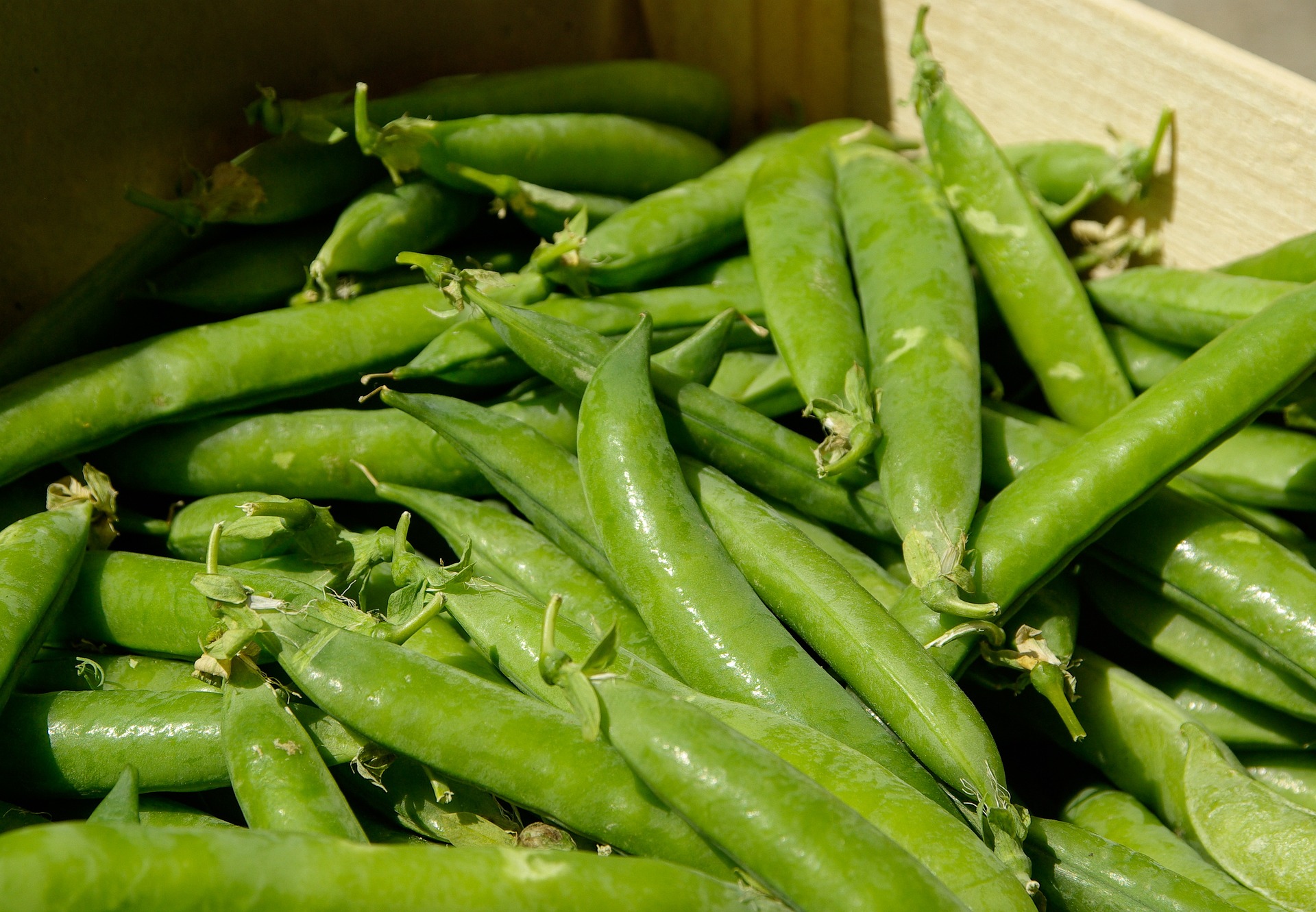
Pea
Peas are a type of leguminous vegetable famous for their sweet flavor and versatility. There are many kinds of peas, like green peas, snow peas, and sugar snap peas. They are rich in protein, fiber, vitamins, and minerals.
How to plant Peas:
- Choose the right time: Cool weather is better for growing peas. Plant them in early spring or late summer, depending on your climate.
- Prepare the soil: Well-drained and loamy soil is essential for peas. Ensure the soil is enriched with compost or well-rotted manure, with a pH between 6.0 and 7.0.
- Soak the seeds: Soak seeds in water for a few hours before planting to encourage germination.
- Planting: Sow seeds about 1 inch deep and 2 inches apart in rows. Ensure that the rows are 12-18 inches apart.
- Provide support: Use a trellis or stakes for taller pea varieties to support their upward growth.
- Watering: Keep the soil evenly moist during the growing season.
- Mulching: Apply mulch around the plants to retain moisture and keep the roots cool.
- Fertilizing: Peas generally don’t require much fertilizer. If needed, use a balanced fertilizer sparingly.
- Harvesting: Harvest peas when they are full-sized and the pods are firm and green. Snow and sugar snap peas can be picked when the pods are still tender.
By following these steps, you can grow peas easily.

Lettuce
Lettuce is a leafy green vegetable that is a great source of vitamins A, C, and K, as well as folate and fiber. Lettuce is a good option for growing in a vegetable garden because it is easy to grow and can be harvested multiple times.
How to plant lettuce:
- Timing: Lettuce prefers cool weather, so plant seeds in early spring or late summer.
- Choose a location: Lettuce prefers partial shade but can tolerate full sun in cooler climates.
- Prepare the soil: Lettuce thrives in loose, well-drained soil with plenty of organic matter. Ensure the soil is slightly acidic to neutral, with a pH of 6.0-7.0.
- Sow seeds: Sow lettuce seeds thinly and cover them lightly with soil. Space the seeds about 6 inches apart in rows that are 12 inches apart.
- Watering: Keep the soil consistently moist. Lettuce has shallow roots, so avoid letting the soil dry out.
- Thinning: Thin seedlings to about 6-12 inches apart when they are a few inches tall to allow room for growth.
- Fertilizing: Lettuce doesn’t need much fertilizer. A light application of balanced fertilizer or compost will suffice.
- Mulching: Apply mulch to keep the soil cool and retain moisture.
- Harvesting: Harvest lettuce leaves as needed by cutting the outer leaves first, or harvest the entire head at once. Lettuce grows quickly, so you can enjoy fresh leaves within a few weeks.
By following these steps, you can grow lettuce easily.
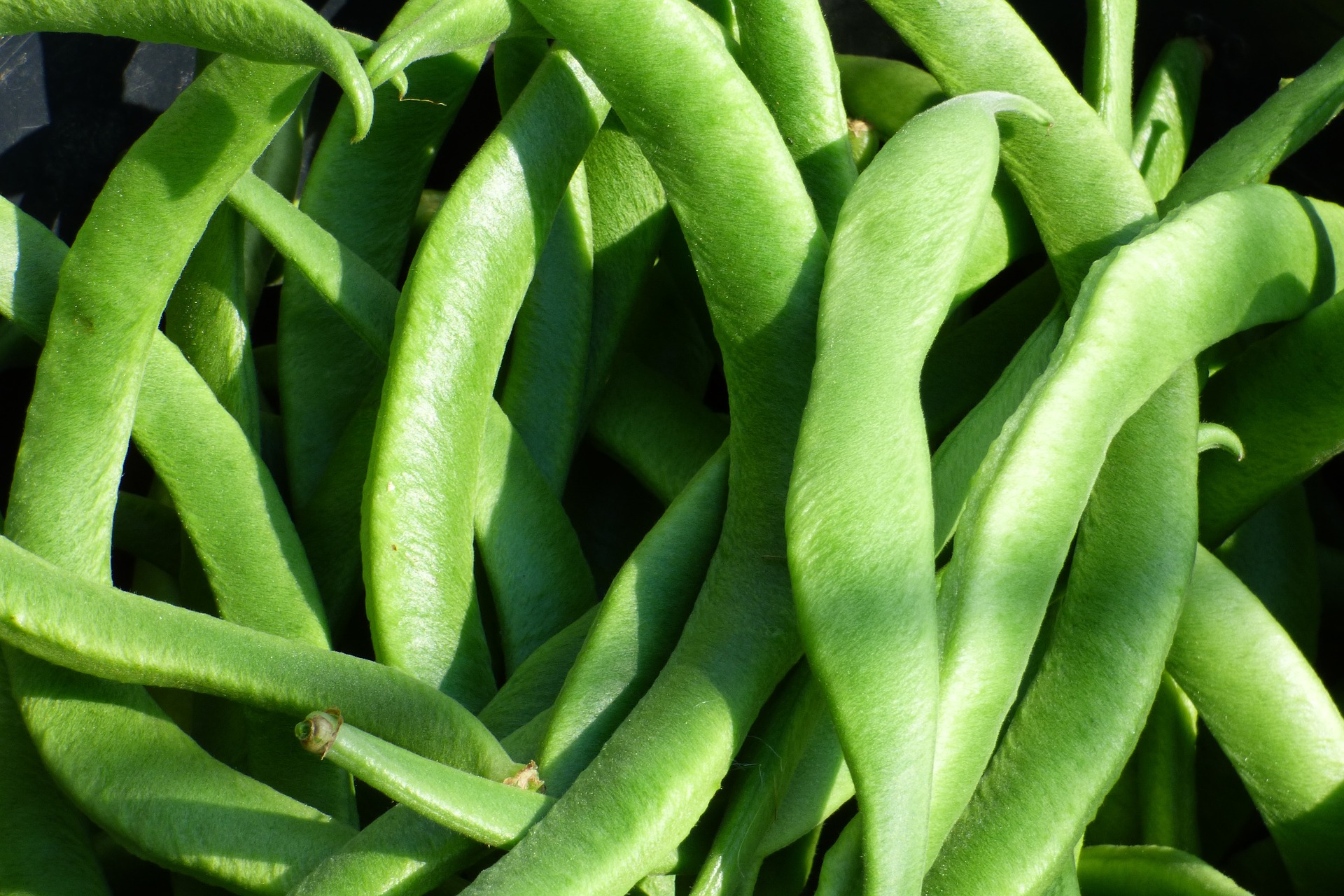
Runner Bean
Runner beans are a popular and easy-to-grow vegetable with great taste and nutritional benefits. They are rich in fiber, protein, vitamins, and minerals.
How to plant runner beans:
- Timing: Plant runner beans after the last frost date when the soil temperature is consistently above 50°F (10°C).
- Prepare the soil: Choose a sunny location with well-drained, fertile soil. Amend the soil with compost or well-rotted manure.
- Sow seeds: Sow seeds directly into the ground about 2 inches deep and 6-8 inches apart in rows that are 18-24 inches apart.
- Provide support: Use stakes or trellises for the beans to climb. Install the supports at planting time to avoid damaging the roots later.
- Watering: Keep the soil consistently moist, especially during flowering and pod formation. Avoid letting the soil dry out.
- Mulching: Apply mulch around the plants to retain moisture and suppress weeds.
- Fertilizing: Feed the beans with a balanced fertilizer or compost during the growing season. Avoid excessive nitrogen, which promotes leaf growth over pod formation.
- Pest management: Keep an eye out for pests like aphids and slugs. Use organic pest control methods if necessary.
- Harvesting: Harvest beans when the pods are young, tender, and about 6-8 inches long. Regular harvesting encourages more pod production.
By following these steps, you can grow runner beans easily.
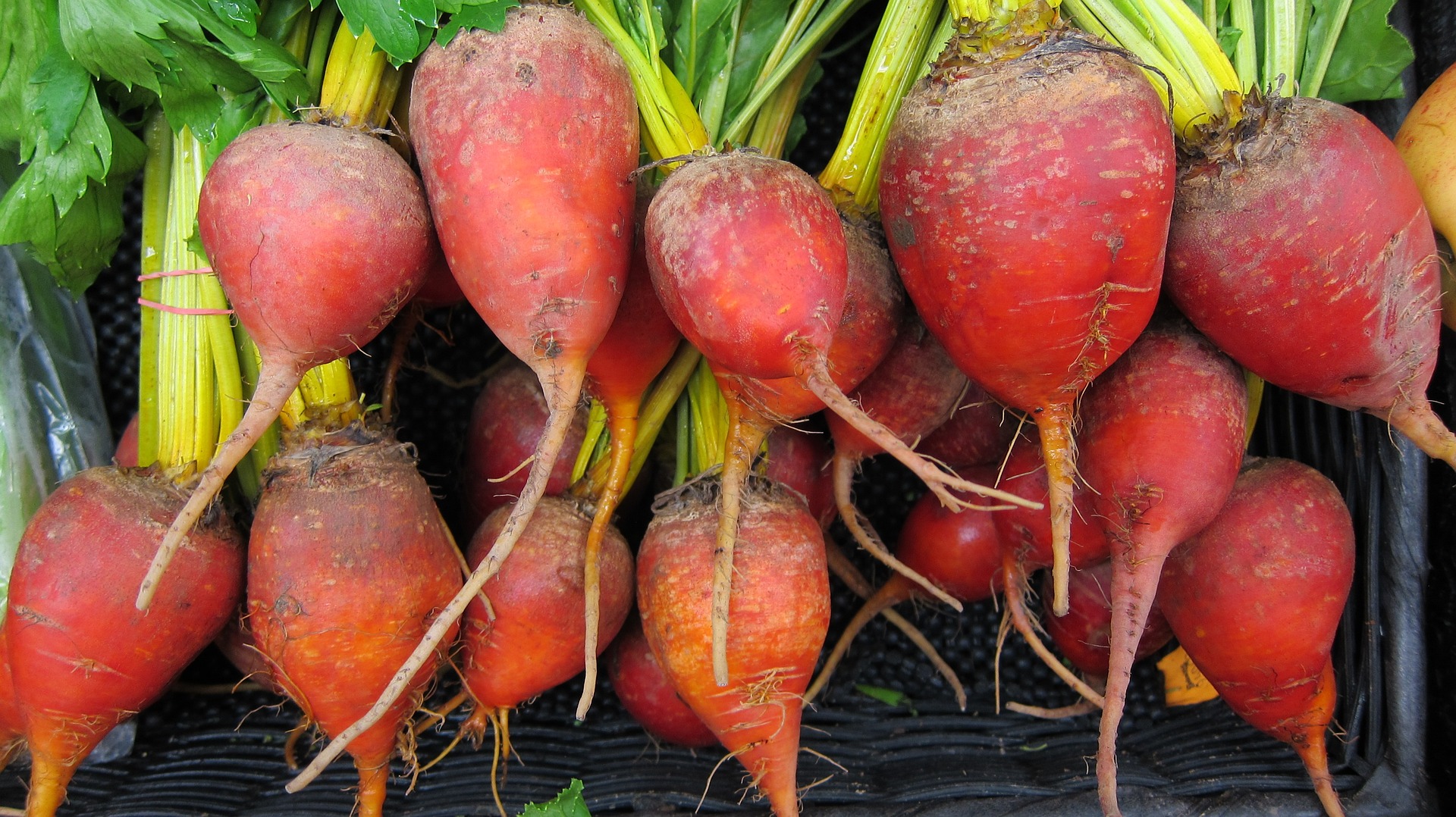
Beetroot
Beetroots are a root vegetable with many health benefits. They are a great source of vitamins, minerals, fiber, and antioxidants.
How to plant beetroots:
- Timing: Plant beetroot seeds in early spring or late summer for a fall harvest.
- Prepare the soil: Choose a sunny location with well-drained, loamy soil. Beetroots prefer slightly acidic to neutral soil with a pH of 6.0-7.0.
- Sow seeds: Sow beetroot seeds about 1 inch deep and 2-4 inches apart in rows that are 12-18 inches apart.
- Watering: Keep the soil consistently moist during the growing season. Beetroots need regular watering to develop properly.
- Thinning: Thin seedlings when they are a few inches tall, leaving 3-4 inches between plants.
- Fertilizing: Feed the beetroots with a balanced fertilizer or compost during the growing season.
- Mulching: Apply mulch around the plants to retain moisture and suppress weeds.
- Pest management: Keep an eye out for pests like aphids and leaf miners. Use organic pest control methods if necessary.
- Harvesting: Harvest beetroots when they are about the size of a golf ball or larger, depending on your preference. Beetroots can be harvested as baby beets or allowed to mature fully.
By following these steps, you can grow beetroots easily.
Reletad Topic: Best Small Vegetable Garden Ideas In Your House

Onion
Onions are a staple in many dishes and are known for their strong flavor and numerous health benefits. They are rich in vitamins, minerals, and antioxidants.
How to plant Onions:
- Timing: Plant onion sets or transplants in early spring or late summer for a fall harvest.
- Choose a location: Onions prefer full sun and well-drained, fertile soil.
- Prepare the soil: Amend the soil with compost or well-rotted manure to ensure it is rich and well-draining. The soil should have a pH of 6.0-7.0.
- Planting: Plant onion sets or transplants about 1 inch deep and 4-6 inches apart in rows that are 12-18 inches apart.
- Watering: Keep the soil consistently moist, especially during bulb formation.
- Fertilizing: Feed onions with a balanced fertilizer or compost during the growing season.
- Mulching: Apply mulch around the plants to retain moisture and suppress weeds.
- Pest management: Keep an eye out for pests like onion maggots and thrips. Use organic pest control methods if necessary.
- Harvesting: Harvest onions when the tops start to yellow and fall over. Allow them to dry in the sun for a few days before storing them in a cool, dry place.
By following these steps, you can grow onions easily.
Conclusion
Vegetable garden ideas can be a rewarding experience for beginners, providing fresh and healthy produce right from your backyard. By following the steps outlined in this article, you can successfully grow tomatoes, carrots, cucumbers, potatoes, radishes, peas, lettuce, runner beans, beetroots, and onions. Each of these vegetables is relatively easy to grow and offers numerous health benefits. So, roll up your sleeves, get your hands dirty, and start your vegetable garden today!

2 Responses